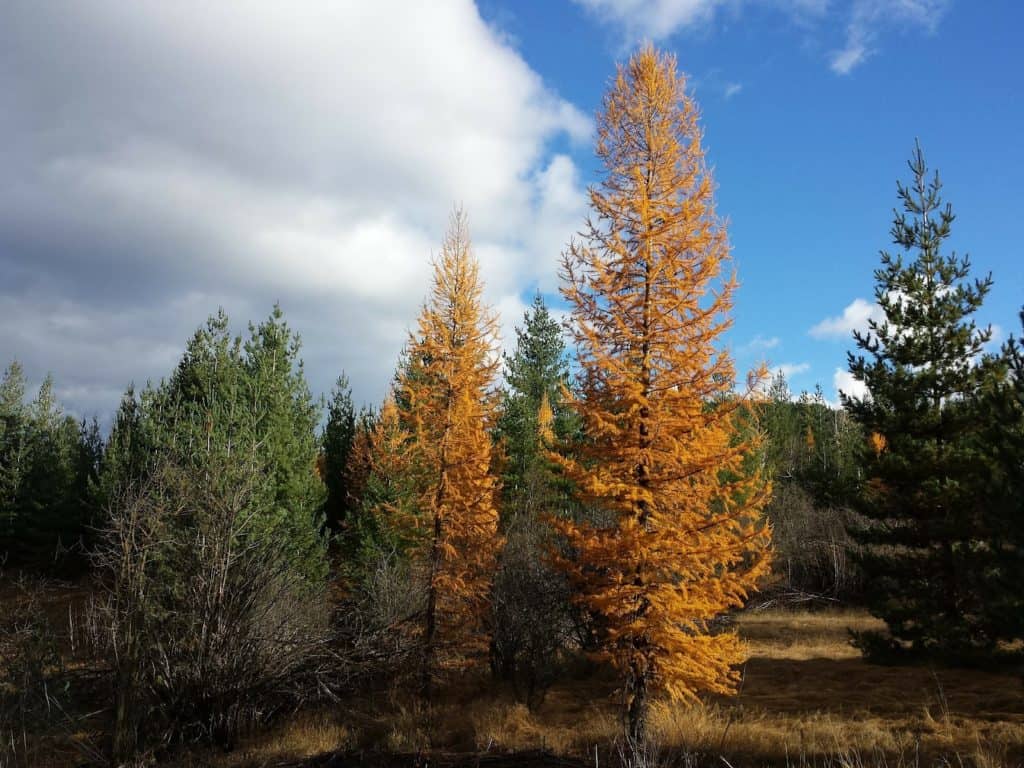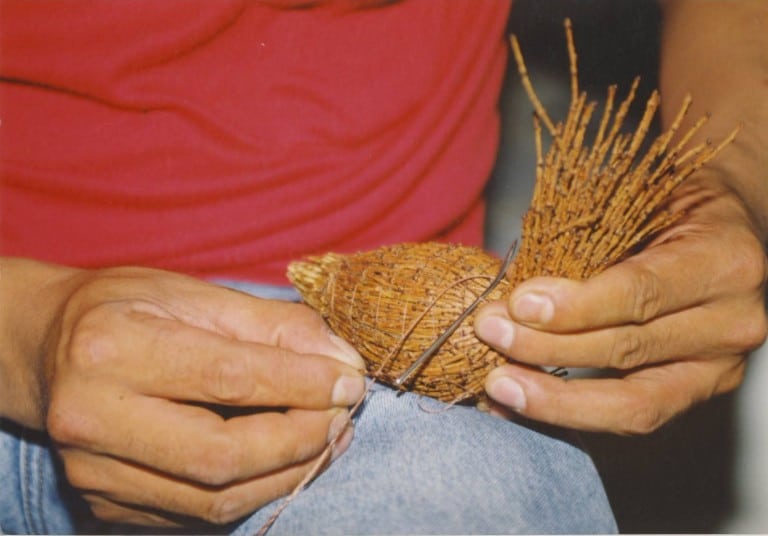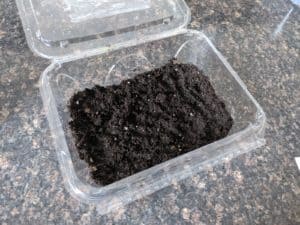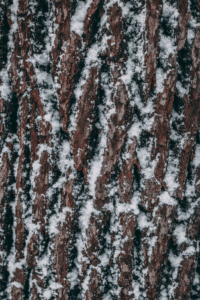Introduction
In this tutorial, we will be discussing mshkiigwaatikohns, which translates to “swamp tree” in English, better known as a tamarack tree. Mshkiigwaatikohns is a very powerful medicine that has been used by Indigenous nations for centuries; it is very effective as both treatment and preventative medicine for a variety of ailments.
We will be learning how to make mshkiigwaatikohns tea, the science behind its medicinal properties and why it’s called nerve medicine.

Source: Pixabay
Vocabulary
Mshkiigwaatikohns - the Anishinaabemowin word for tamarack tree; translates to “swamp tree” in English
Deciduous conifer - a type of tree that forms cones and sprouts needles (conifer) but shed their leaves/needles yearly (deciduous)
Volatile oil - a distilled or essential oil that is easily or readily evaporated, often obtained from plant tissue.
Expectorant - a medication that promotes the discharge of mucus from the respiratory tract
Poultice - a soft/moist mass, often made from plants that is applied topically to skin to relieve soreness and inflammation
Phenolic flavonoids - largest photochemical molecules with antioxidant properties from plants
Dihydroquercetin (di-hi-dro-cour-suh-din) - a phenolic flavonoid that helps vitamin C recirculate through the body and limits the inactivation or oxidation of vitamin C
Isolariciresinol (i-sol-are-ee-see-rez-in-ole) - a lignan that has a role as a plant metabolite. Found in tamarack bark, it actively fights against DPPH
Lignans - plant compounds that contain antioxidant and estrogen properties
DPPH - organic chemical compound that is heavily linked to many neurodegenerative diseases such as Alzheimer’s Disease
Properdin (prop-er-din) - a positive regulator of the immune system
Arabinogalactans (air-ah-bean-o-gal-ack-tin) - a compound that is found especially in the wood of larch trees (e.g. tamarack trees) that yields arabinose and galactose on hydrolysis
Immunostimulant - a substance that has the capacity to stimulate the immune system through activation of any of its components
Materials
- 5-litre pot
- Potable water
- Tamarack tree bark, twigs
- Fine mesh strainer, cheese cloth or similar
- Leafsnap app
Non-Computer Activity
Description and Traditional Uses of Mshkiigwaatikohns
Tamarack trees are native to North America—traditionally known as Turtle Island—and they are in the pine family. Tamarack trees are classified as a deciduous conifer and are the only conifer that loses its needles during fall and winter each year, usually shedding around October. These trees tend to grow with a spiral shaped trunk and ‘s’ patterned branches.
The Anishinaabemowin word for tamarack tree is mshkiigwaatikohns, which translates to “swamp tree” in English. It is traditionally referred to as a “swamp tree” because of the way it chooses to grow. There are many types of trees that choose to survive in very wet environments such as ash, black spruce, elm, red maple, alder, willows, among others, however, tamarack trees are notable because they are the only tree that can continue to actively grow in completely flooded conditions. The aforementioned trees are able to survive in flooded conditions only because they enter a hibernation-like state in order to simply maintain their lives or slow their deterioration.
Some of the traditional uses of mshkiigwaatikohns are to address a number of health issues such as burns, boils, frostbite, infected wounds/deep cuts, as well as a treatment for colds, constipation, urinary tract and upper respiratory issues. The inner bark would be processed to create a poultice to treat some of these conditions.
Fun fact: Mshkiigwaatikohns medicine was provided to early settlers by First Nation peoples in order to prevent and treat scurvy. Mshkiigwaatikohns have antiseptic properties due to the natural occurrence of bornyl acetate, a volatile oil that acts as an expectorant.
Some non-medicinal traditional uses include using the tree roots for making canoes, toboggans, canoe paddles, snowshoes and frames for drums. The rotted wood is used to smoke fish and hides to process for clothing and moccasins. Tamarack twigs are bound together to create beautiful goose decoy sculptures, most often made by Cree nations.
Medicinal Properties of Tamarack Tea
You may be wondering, why is mshkiigwaatikohns known as nerve medicine? How does tamarack bark treat and prevent so many health issues?
Well…
Mshkiigwaatikohns have been studied quite often to understand its relationship with the human nervous system, which has found some amazing results. There are a few different antioxidant flavonoids which have a strong effect on our nervous system issues and even autoimmune disorders such as multiple sclerosis.
Tamarack bark is recognized as having multiple phenolic flavonoids that have the advantage of being able to cross the blood-brain barrier because they are naturally occurring. This allows healing to address diseases in the brain such as Alzheimer’s disease. One of these phenolic flavonoids is called dihydroquercetin. It provides protection by helping vitamin C recirculate through the body and enables it to last longer inside the body because of its ability to limit the inactivation or oxidation of vitamin C. This makes it effective for treating diabetes-related issues and aging in general.
Tamarack bark also contains lignans, which are chemical compounds found in plants. These are really great for protecting the body against formation of cancer and improving overall health. Lignans are plant compounds that contain antioxidant and estrogen properties, and they work by blocking enzymes that participate in hormone metabolism which in turn interferes with the growth and spread of tumor cells. Lignans found in tamarack bark have an amazing ability to inhibit or regulate the amount of nitric oxide produced in the body, in order to prevent major nerve damage and reduce neuropathic pain. Tamarack bark is especially rich in a lignan called isolariciresinol, which actively works against DPPH – an organic chemical compound that is heavily linked to many neurodegenerative diseases such as Alzheimer’s disease.
Fun fact: One of the traditional uses of tamarack trees, used most often by Cree nations, is to help treat blindness and other eye sight issues caused by aging (macular degeneration). They would harvest a healthy, green tamarack log and burn it until a thick black resin secretes from one end and they would apply that directly to the person’s eyes once cooled! They knew the bark is very high in antioxidants that would help fight against aging.
Mshkiigwaatikohns is amazing for the body’s immune system because of it’s fantastic immunostimulatory qualities. It helps modulate the immune system, making it quite effective when treating autoimmune diseases because of the significant increase in properdin it facilitates. Properdin is a positive regulator of the immune system.
Another amazing quality of tamarack bark is the effect it has on airborne/environmental allergies! One compound, called arabinogalactans, is found concentrated in the wood burls of tamarack. It plays a significant role in reducing inflammation in the upper respiratory tract, which makes it amazing for treating upper respiratory infections.
Mshkiigwaatikohns medicine is absolutely amazing and extremely powerful for a number of issues and has been a staple of traditional First Nation health and wellness strategies for generations!
Steps to Make Mshkiigwaatikohns Tea
Note: tamarack bark has natural laxative properties, so use caution when drinking the tea in great/potent quantities, unless that’s the desired effect. Recommended to consume a maximum of two cups per day for adults. For children, it’s recommended that you reduce the strength of the tea.
- Harvest from a small tamarack tree and remove all the branches. Remember to keep the branches, they can be used as well. You will want to harvest in the autumn or winter when all the needles have fallen off so the medicine inside is more easily released.
- After you’ve removed the branches, remove the bark from the trunk of the tree. If desired, you can add some small twigs for stronger medicine.
- Place approximately one cup of bark pieces/shavings and twigs into a five litre pot filled with potable water. Simmer for about one hour with a lid on. To adjust the strength of the tea, simmer for less or more time.
- Once it’s finished simmering, remove from heat and strain at least two times to ensure all fine particles are removed. Pour the strained tea into a container, let it cool down to desired drinking temperature and enjoy!
An additional use for the tea is to make a bath or soak! It’s fantastic for treating nerve damaged limbs, for example, numbness in feet caused by diabetes. This can be made the same way as the tea, but you’ll want to add more bark and simmer for longer to increase the strength of the medicine as it won’t be directly consumed, rather, it’s absorbed through the skin.
Tip: Fresh tamarack bark is best when making a tea, bath or soak.

Conclusion
In order to make tamarack tea, you’ll need to harvest the bark and to do that, you’ll need to be able to identify the tree. Practice identifying tamarack trees by taking a nature walk! To help you, here are some identification tips:
- Tamarack trees are found spread across most of northern North America and parts of Alaska. In Ontario, they are found almost everywhere but are most common in northern boreal forests
- Usually found near black spruce trees, in poorly drained soils such as swamps, bogs, streams and edges of lakes (tamarack tree roots are very shallow)
- In the north, tamarack is most commonly found growing at sea level but in the south, they are commonly found at higher elevations
- In the spring/summer, the needles are a pale green colour and in the fall the needles turn a golden yellow colour and eventually shed. They are short needles, approximately 1-2 inches in length and grow in clusters that stem from small cones
- Tamarack trees can grow to heights of 15-23 metres (50-75 feet) and the branches/twigs tend to grow in a slightly ‘s’ shaped pattern
To help you identify trees on your nature walk, here’s a great identification app called Leafsnap developed by Columbia University, the University of Maryland, and the Smithsonian Institution. It’s a free app that allows you to identify tree species by taking photos of their leaves! It also contains high-resolution images of their flowers, fruits, petioles, seeds and bark!
We want to see the awesome things you’re creating! Take a photo or video and share your work with us by emailing media@pinnguaq.com or tagging @pinnguaq on Facebook, Twitter, or Instagram. Don’t forget to include the hashtag #LearnWithPinnguaq!
Resources
- Traditional Cree tamarack bird artisan
- Tamarack tea review video for neuropathy pain
- Leafsnap tree identification app
References
Caza, Cheyenne. “Tamarack: Edible Use.” Wisewood Apothecary, October 7, 2019.
Edible Wild Food. “Tamarack Larix Laricina.” EdibleWildFood, n.d. Accessed June 16, 2020.
Garden, Creators. “Tamarack.” Creators Garden, January 1, 2015.
Neveu, Mark J. “Vitamin C and Dihydroquercetin.” Life Extension. Life Extension Magazine, December 2006.
Pedersen, Dennis V, Gadeberg Trine A.F., Thomas, C., Wang, Y., et.al. “Structural Basis for Properdin Oligomerization and Convertase Stimulation in the Human Complement System.” Frontiers in Immunology. Frontiers, August 7, 2019.
Plant Watch, Alberta. “Tamarack.” Tamarack, n.d.
Stephenson, Karen. “Winter Survival Food: Winter Teas.” Edible Wild Food Blog, 2012.
Tungmunnithum, Duangjai, Areeya Thongboonyou, Apinan Pholboon, and Aujana Yangsabai. “Flavonoids and Other Phenolic Compounds from Medicinal Plants for Pharmaceutical and Medical Aspects: An Overview.” Medicines (Basel). MDPI, August 25, 2018. doi: 10.3390/medicines5030093
Winter, Catherine. “HOW TO: Prepare Healing Teas from Winter Trees.” Inhabitat Green Design Innovation Architecture Green Building, 2016.






